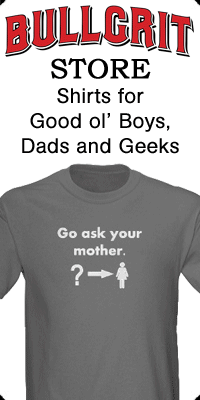I had a 4-room dungeon prepared for the game session, and figured it might be interesting to see how it worked out in real time. So, I made notes throughout the game session to see how things moved along.
We started the game a little after 8:00 p.m. (later than normal for our group). The PCs had just left the previous dungeon (which they did not fully explore, much to my disappointment), and were heading for a small town.
They stayed in the town a couple of game days to pick up supplies, They hired a guide to take them to a larger city they had never been to. Three days into the journey, they were waylaid by an ogre and a couple of orcs.
The PCs:
Human barbarian/sorcerer 1/3
Human cleric 4
Elf fighter (archer) 4
The NPC guide does not fight or join the dungeon invasion
9:20-9:33 — 1 ogre, 2 orcs [EL4, 4.5 rounds, 13 minutes (2.9 min/rnd; 29 secs/combatant)]
– Barbarian/sorcerer used mage armor, shield, enlarge person.
– Cleric used shield of faith and some healing.
– Fighter was badly beat up by ogre, but the cleric’s healing made it all better.
They had their guide trail the humanoids back to their lair. He did so, and they found the cave at 9:40. They discussed how to approach the cave and then entered the cave (attempt #1) at 9:45.
Room 1
9:48-10:01 — 6 orcs [EL4, 7 rounds, 13 minutes (1.8 min/rnd; 12 secs/combatant)]
– Barbarian/sorcerer used mage armor, enlarge person, shield?, and held bottleneck tunnel.
– Cleric stood behind and healed barbarian/sorcerer for first 4 rounds, then moved forward into room and engaged in melee.
– Fighter couldn’t do much for first 4 rounds, then moved in and engaged with bow at near point blank range.
After the fight, they explored beyond first room, found room 2. Room 2 was empty of enemies, but a cage held 3 gnome captives. The PCs freed the gnomes. Questioning the gnomes, they learned there were probably 20 orcs in total. The PCs decided to pull out with the freed gnomes to rest and recover. They left the cave at 10:05. Rested overnight. Went back into cave (attempt #2) at 10:25.
Room 1, again
10:25-10:40 — 6 orcs [EL4, 5.5 rounds, 15 minutes (2.7 min/rnd; 18 secs/combatant)]
– Barbarian/sorcerer used mage armor, shield, enlarge person and stepped just a little too far into room, allowing all 6 orcs to engage him (a couple had flanking).
– Cleric stood behind and healed.
– Fighter took some shots when he could, from behind the other two PCs for first 3 rounds.
– Barbarian/sorcerer fell to onslaught of greataxes, cleric healed him to consciousness, but he stayed prone (to avoid 6 AoOs) and fought poorly.
– Fighter jumped in, over barbarian/sorcerer, in round 4 and started shooting up orcs from near point blank range.
Battle went poorly, and the party was pretty used up. Left cave at 10:41. Rested overnight. Went back into cave (attempt #3) at 10:55. Went through rooms 1 and 2 (now unguarded), and made it to room 3.
Room 3
10:58-11:02 — 1 ogre, 2 orcs [EL4, 2 rounds, 4 minutes (2 min/rnd; 20 secs/combatant)]
– Barbarian/sorcerer used enlarge person, mage armor, shield; he did not block the way in, so cleric and fighter could join fight.
– Cleric used shield of faith.
– Fighter shot arrows.
This room had a chest, which the PCs opened (setting off a magic trap against which the cleric made her save for no effect). The chest had some treasure, and the PCs decided to leave it for now. They searched the room and found a secret door. They moved through the door.
Room 4
11:08-11:25 — 1 orc 5th-level cleric [EL5, 8 rounds, 17 minutes (2.1 min/rnd; 31.5 secs/combatant)] This orc cleric had heard the fighting outside the secret door, so he was able to fully buff up before this fight.
– Barbarian/sorcerer used enlarge person again, (still had mage armor), shield; held hallway to trade blows with orc.
– Cleric stood behind and healed.
– Fighter took shots from behind teammates each round.
– Barbarian/sorcerer fell unconscious, cleric healed him back to consciousness, orc stabbed him while prone.
– Barbarian/sorcerer died, cleric cast healing one round too late, orc moved over dead barbarian/sorcerer and attacked cleric.
– Cleric cast sanctuary, orc tried but failed to attack him.
– Fighter continued shooting orc.
– Cleric cast obscuring mist and retreated.
– Orc moved up to fighter and attacked.
– Fighter retreated.
– Orc had been reduced from 41 hit points to 20 hit points, so he used cure spells to fully heal.
The barbarian/sorcerer died, and the rest of the party retreated under cover of obscuring mist. Left the cave at 11:26.
Dungeon Time Summary:
First foray in dungeon (game day 1) = 20 minutes real time, saw rooms 1 and 2.
Second foray into dungeon (game day 2) = 16 minutes real time, saw only room 1.
Third foray into dungeon (game day 3) = 31 minutes real time, saw rooms 1, 2, 3, and 4.
Total time in dungeon = 67 minutes real time; about 20 minutes over 3 days game time.
The fights make for interesting comparisons:
The very first fight, before even entering the dungeon was against 1 ogre and 2 orcs. They eventually fought the same battle later, in the dungeon.
The first fight against the ogre and orcs was brutal on the party (on the fighter/archer specifically). The second fight against the ogre and orcs was a cake walk; I don’t think any PC got hit.
1st ogre & orc battle: 4.5 rounds, 13 minutes (2.9 min/rnd; 29 secs/combatant)
2nd ogre & orc battle: 2 rounds, 4 minutes (2 min/rnd; 20 secs/combatant)
The fights against the 6 orc guards were rough because the orcs were using greataxes (1d12+3 damage). In the first fight, the barbarian/sorcerer stood in the 10’-wide hallway, where only two orcs could attack at a time. The second fight against the 6 orc guards was brutal on the barbarian/sorcerer because he stepped through the “doorway” of the room, allowing all 6 orcs to attack him. The barbarian/sorcerer stayed in that position the entire time, and the cleric’s healing couldn’t keep up with the orcs’ damage output. [Note: this was a 3.5 game, but I had equipped the orcs with scalemail and greataxes, as statted up in 3.0.]
1st 6-orc battle: 7 rounds, 13 minutes (1.8 min/rnd; 12 secs/combatant)
2nd 6-orc battle: 5.5 rounds, 15 minutes (2.7 min/rnd; 18 secs/combatant)
These four battles show two different things:
The ogre and orcs fights showed what a difference a couple lucky/unlucky rolls can make – the fighter/archer got smashed hard twice in the first fight, but no one got hit in the second.
The orc fights showed what a difference a simple tactic can make in a fight – standing in a chokepoint where enemies were limited in room to attack, versus letting one’s self get surrounded.
Anyway, I thought the data was interesting (especially the comparative combats).
Bullgrit
bullgrit@totalbullgrit.com






 Categories:
Categories: 





